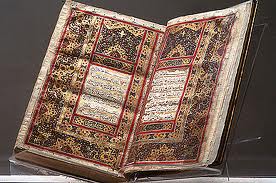Islamic traditions
Dreams played an extremely important role in Islam. Muhammad, for instance, was given his divine mission in a dream as recorded in the famous Nocturnal Journey, which, in the original, had 14 chapters and ran to 65 pages (de Becker, 1968, pp. 45 - 47). According to Van de Castle, "Much of the Koran ... was revealed to Muhammad in his dreams over a period of several years. Each morning Muhammad would ask his disciples about their dreams, offer them interpretations, and then share his own dreams with them. After hearing the dream of one of his followers, Muhammad instituted the practice adhan, the daily ritual call to prayers from the minarets... Dream interpretation was greatly revered among the Muslims. They considered it a noble science, taught to Adam by God himself and passed by Adam to Seth, by Seth to Noah, and so on down to Muhammad" (Van de Castle, 1994, pp. 39 - 41). According to the Koran (12:6), the science of dreams was "the prime science since the beginning of the world" (Van de Castle, 1994, p. 71).
Following the death of the prophet in 632 A.D., "a rich oral tradition of dream interpretation developed, and scattered references to specific dreams and the interpretations given to them have been preserved in chronicles dating from around 700. The most famous of the early Muslim interpreters was Ibn Sirin, who died in 728. Many of his rules were taken down in writing by others and eventually collected and published in manuscripts bearing his name after the tenth century. ... Arab-Muslim oneiro-criticism reached heights no other civilization seems to have known. It was claimed that "7500 dream interpreters existed in the 10th century" (Van de Castle, 1994, p 71).
In addition to the writings attributed to Ibn Sirin, other important dream manuals available and employed in the Arabic world included the one from Artemidorus, which was translated into Arabic in 873; a tenth century treatise by a Christian known in Arabic circles as Achmet, which included knowledge gleaned by both Christian Byzantine and Arabic scholars; the one by ad-Dinawari, which appeared in 1006; and finally the two-volume set compiled by an-Nabulusi, who died in 1731 (Van de Castle, 1994, p. 72).
Previous section Next section List of sections List of chapters

